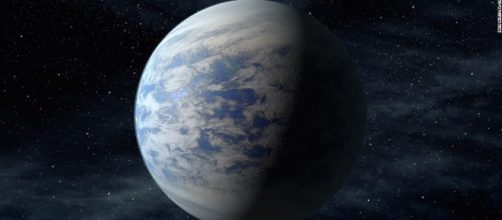Scientists discovered a planet known as OGLE-2016-Blg-1195Lb using a technique known as microlensing. This planet is estimated to have a mass that is approximately the same as the earth and it also is located at a distance similar to the one that separates the earth from the sun. This new planet is at approximately 13,000 light years away from the earth, orbiting a star that is believed to be very small, making it difficult to recognize it as a real star. Although, the planet is extremely cold to allow the development of life, it´s believed that, its discovery can add new information about planetary systems.
OGLE_2016-BLG-1195Lb
This is an earth-like planet, with the same mass and orbiting a star whose distance is similar to that of the earth and the sun. Due that its star is so weak, this planet is extremely cold; therefore, it´s a planet covered by ice. The planet´s host star possesses 8% the mass of the sun and it´s believed that it could be a brown dwarf- a star whose core is not sufficiently hot to produce energy through fusion. At 1 astronomical unit from its host star, the planet would be a ball of ice, colder than Pluto, unable to have any water on its surface.
Microlensing
Microlensing is a technique that astronomers use to detect distant astronomical objects. To do so, scientists use background stars; when a star travels through the path of a background star and the earth, telescopes on earth are able to detect when light coming from the background star is bend by the gravitational field of the foreground star, amplifying its brightness.
An object, such as a planet may produce a slight glitch in brightness, suggesting that an object is in the vicinity. Using this technique, astronomers have been able to discover the some of the most distant t objects in space.
Spitzer Telescope
For this study, astronomers used the Spitzer Telescope and the Korea Microlensing Telescope Network ( KMTNet), consisting of three wide field telescopes located in Chile, Australia and South Africa. After the microlensing observation, scientists analyzed the data and were able to calculate both, the mass of the star and the planet, as well as the distance separating them. Earth based telescopes are not able to detect bodies smaller than this, although, the Wide Field Infrared Survey Telescope (WFIRST), which is planned to be launched in the next decade will possess the needed capability to sensibly detect smaller exoplanets.

